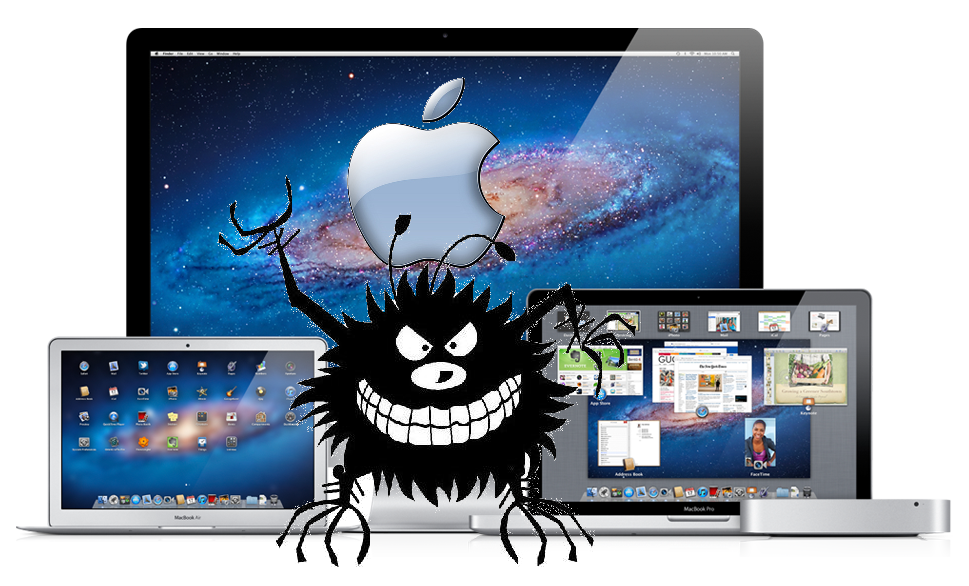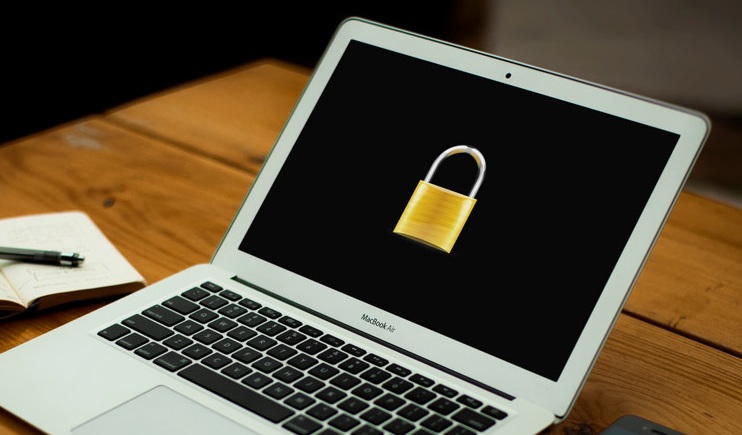No matter which brand you are using, viruses can attack any system. Few known manufacturers in the industry such as Apple claim that its devices are efficient in fighting with malware. It is true that the risk of running into viruses on Mac is much lower than on Windows PC. It is mainly because the Microsoft operating system is much more widespread than the Apple and cybercriminals are more focused on it. But this does not mean that gadgets of Apple are invulnerable. If you are not using system carefully, then even Mac OS can encounter this problem.
Imagine a situation where your gadget gets infected with ransomware. This particular virus is capable of encrypting your data on the disk after which the attackers demand a ransom in the form of money to decrypt it. Like this, many other malicious contents are present in the digital world which can lead you to data loss as well as component failure. But before contacting an expert, you can try to fix these issues on your own. Below we have discussed a process with which you can find out how to clean Mac from viruses. To help you in preventing such situations from arising, we have also suggested some methods and solutions which you can apply. Here, it is mandatory to follow a mentioned process in the same way it has been written. Otherwise, you will not be able to get desired results.
 Use an Antimalware
Use an Antimalware
The first step to clean a Mac from viruses is to install good anti-malware software such as Malwarebytes. It is effective, fast and manages to remove almost all malicious software designed and targeted for Mac OS. It can be downloaded and used for free, but after 30 days its real-time protection module will expire. To continue using it, you will have to purchase the premium version which will cost you 39.99 Euros for a year. To download Malwarebytes for Mac, go to its official website and click on the free download option. When the download is complete, start Malwarebytes-Mac-xx.pkg executable you have obtained. A window will open where you have to click in sequence on the “continue” and “accept” buttons for four consecutive times.
Click on the install button and type the password of your user account on Mac OS (the one you use to access the system) and press enter. At the end of setup, click on close and delete the installation package of Malwarebytes for Mac.
Now you have an excellent anti-malware for Mac and a real-time protection against viruses, spyware, adware and other malware designed for Mac OS. If you find the real-time protection module, turn it off by starting Malwarebytes and clicking on the “On” option which you will see next to the real-time protection item (on the right).
After adjusting the real-time protection settings, you need to start a full system scan. To do so, click on “scan now” button in Malwarebytes and wait patiently for the procedure to conclude as it may take a few minutes. When the scan is complete, and malware has been detected on your Mac then select the related items and proceed to quarantine them. You may be asked to restart your computer for the changes to take effect. Whereas, on the other hand, if you see the words “Congratulations, you are clean!” then it means that no known threats have been detected on the Mac.
If Malwarebytes has not fully satisfied you then to uninstall the program, you have to start it again. Go to the help menu and select the uninstall Malwarebytes entry. If, however, you do not want to remove the program but only wish to hide its icon in the menu bar (next to the system clock) then go to the preferences menu and put the check mark next to the entry hide application icon. If you are looking for alternative software, then you can try Bitdefender virus scanner. It is free antivirus software and does not include a real-time protection module. It can also recognize viruses for Windows.
To download Bitdefender virus scanner, all you need to do is connect to the Mac app store page and press the get/install button. When the installation completes then, to start a system check, you must first click on the “end” button in order to accept the automatic signature update. Now click on “check critical paths”. At this point, put the check mark next to the item “More protection” and click on the “allow access” button. Here a window will open in which you will find a drop-down menu. Select Macintosh HD from it and press “allow access” to proceed with the scan.
If Bitdefender virus scanner also fails to satisfy you then to uninstall the program, start it again and go to the help menu. Select the uninstall Bitdefender virus scanner entry which will initiate the process of deleting the software. If you do not wish to remove the program but only want to hide its icon then go to the preferences menu and put the check mark next to the entry hide application icon.
Delete Malicious Extensions from the Browser
If you are facing problems related to web browsing, for example, you are redirected to sites full of advertisements then try checking the list of extensions in your browser and remove such extensions which you suspect. Below we have mentioned steps to resolve this issue for most popular browsers.
Safari – if you use Safari (the default Mac OS browser) then you can check the list of extensions installed in it by going to the preferences menu (top left). Here a window will open with an option of “Extensions” tab, select it. Now you have to locate the suspicious extension from the left sidebar and remove it by clicking first on its name and then on the uninstall button that appears on the right (confirming the operation).
Chrome – if you use Chrome then check the list of extensions installed in the browser by selecting other instruments and then extensions from the menu. In the new tab find all extension that you want to delete and click on the icon of trash bin next to it. Now just click on the “remove” button to delete all selected files. Firefox – in Firefox, check the list of extensions installed in the browser by clicking on the button located at the top right corner. Select the item “Extensions” from the left sidebar, locate the add-on to remove and click on the “remove” button.
Enable Mac OS Protection
Mac operating system includes several functions that prevent and counter malware infections. One of them is called Gatekeeper. It prevents the execution of software that comes from non-certified developers. If you keep the Gatekeeper function active (which is available in Mac OS Lion 10.7.5 and later), then your Mac will not run those programs which are downloaded outside the Mac App Store and are not traceable to certified developers. It prevents you from running potentially dangerous software and protects your system from “catching” malware.
To verify that Gatekeeper function is enabled and correctly configured on your Mac, open “system preferences” (gear icon located on dock bar), go to “security and privacy” and select general tab. If you see a checkmark next to the App Store and identified developers, then do nothing as Gatekeeper is already configured correctly. Otherwise, click on the lock icon located at the bottom left, type the password of your user account on Mac OS (the one you use to access the system) and then press enter. Put the check mark next to the App Store and identified developers and your process will be done.
You can also use a feature known as Xprotect. It is a real antimalware, complete with a database of signatures that Apple silently updates over time. It automatically blocks the execution of malicious software. When you buy a Mac, then this feature comes already active by default, but its updates which are essential for effective system protection may be disabled. Here, you need to check whether updates for Xprotect are enabled or not (you can find the full history here). To verify it, open “system preferences”, go to the App store and check if there is a checkmark next to the install system data files entry and security updates. If not then click on a lock icon located at the bottom left, type your password on Mac OS (the one you use to access the system) and press “Enter” key. Put the checkmark next to the item “install the system data files and security updates” which will conclude the process.
Once you have activated the security measures in Mac OS and downloaded a trustworthy antimalware (to be used from time to time for controlling a system), then you can rest all your worries on it. But do not believe to be “invincible” as a single software download from untrustworthy sites (accepting their execution despite system warnings) can still lead you to malware and viruses. Here, we advise to download programs from reliable sources (primarily the Mac app store) and avoid software from BitTorrent network or from file hosting services (which are illegal). Bypass Gatekeeper restrictions only with proven reliability software, such as LibreOffice which does not come from Apple-certified developers but is secure as a program.
Format Your MacBook
Even after applying all above-mentioned methods if your system is not clean from viruses, then you can try to format the computer. Formatting refers to erasing all data stored on its disk and reinstalling the operating system (Mac OS) from scratch. Before proceeding, make sure you have made a complete backup of all data and have kept them in a safe place. To perform the backup you could use Time Machine and its recovery function. You can also copy files manually on an external disk. After restoring the system, you can reinstall your data in a simple way, except for the applications, which you will have to re-download “manually” from the Mac app store or their official websites.
After securing the data, format your Mac, restart your computer and hold down the cmd + r keys while turning on the system to access the recovery mode. Then select disk utility, choose the disk you want to format (e.g. Macintosh HD) from the left sidebar and click on the Initialize button. A window will open where you will have to type the name of the drive you want to assign after formatting. Set the Mac OS Extended (Journaled) and GUID Partition Map options in the drop-down menus located at the bottom and click on the Initialize button.
After formatting the disk (which causes the deletion of all data in it), exit disk utility, go to Mac OS installation, click on the “Continue” button and follow the on-screen instructions to install a new copy of OS. To complete the operation, your computer must be connected to the internet (all the files of the operating system must be downloaded, which could take a long time). If you do not have an internet connection, then you need to create a USB stick with the Mac OS installation files.

 Use an Antimalware
Use an Antimalware